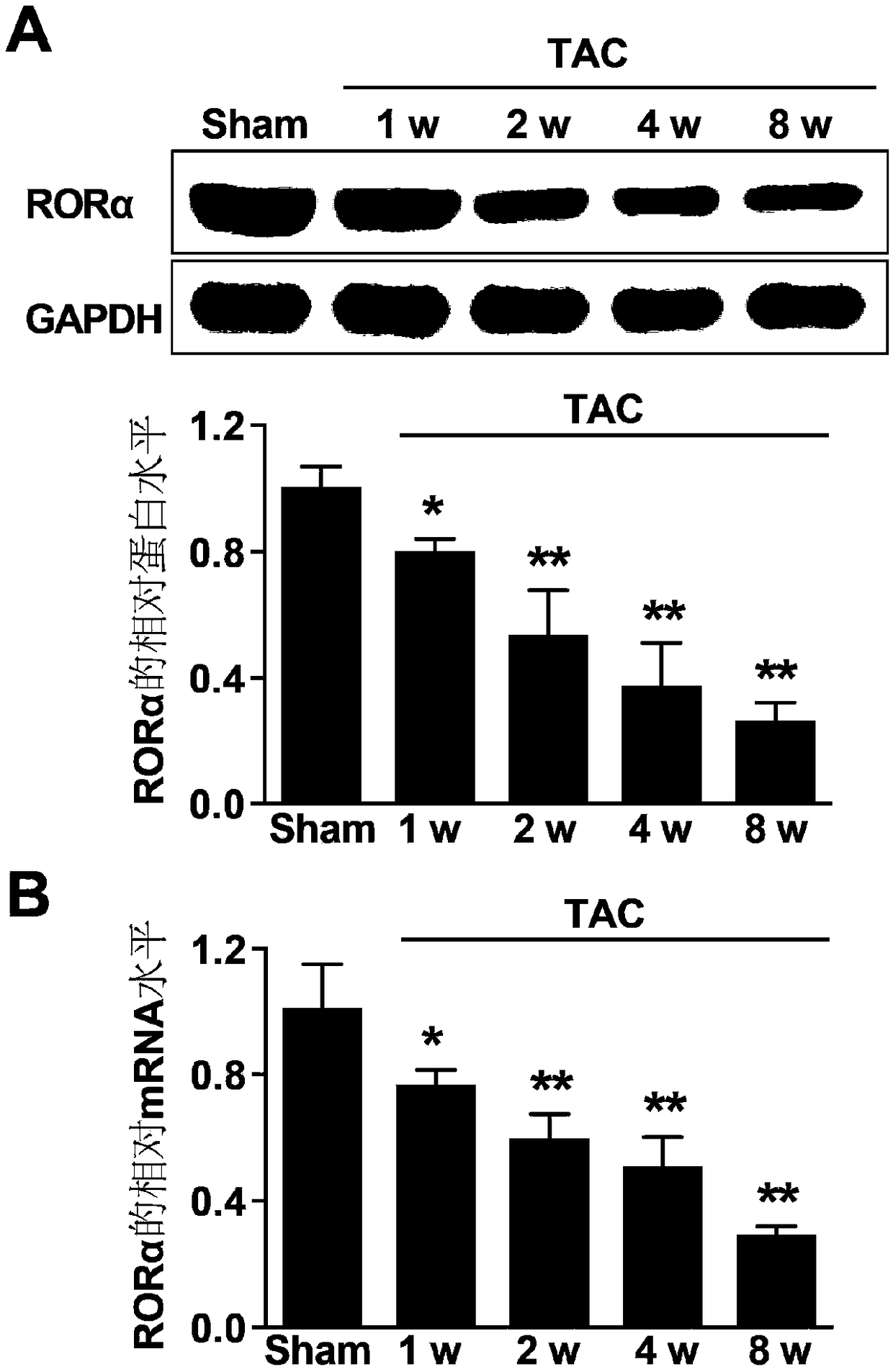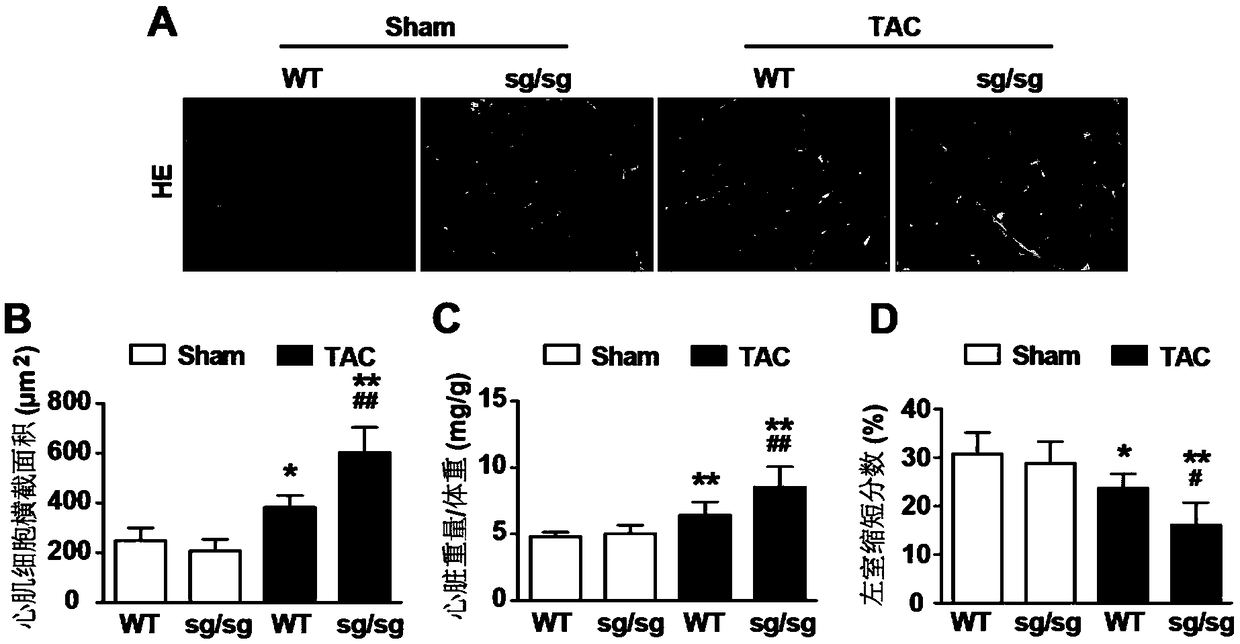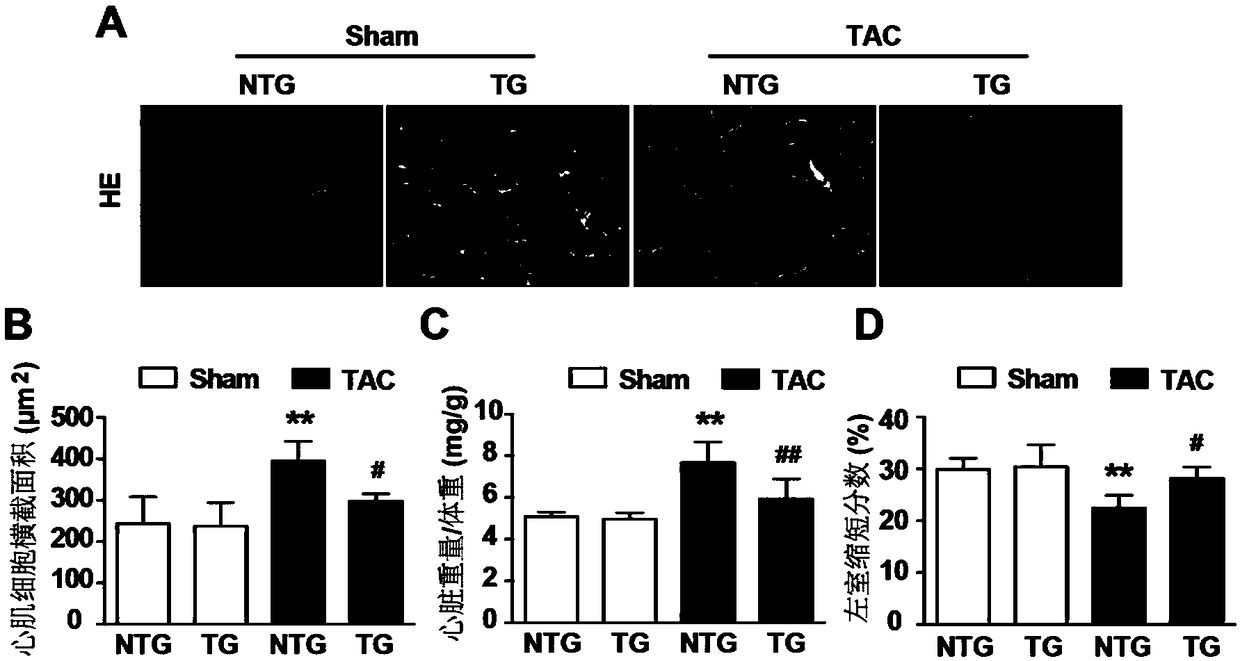Application of nuclear receptor ROR alpha in preparation of anti-heart failure drugs
A heart failure and nuclear receptor technology, applied in the field of biomedicine, can solve the problems of poor efficacy of drugs for the treatment and prevention of heart failure
- Summary
- Abstract
- Description
- Claims
- Application Information
AI Technical Summary
Problems solved by technology
Method used
Image
Examples
Embodiment 1
[0028] The establishment of embodiment 1 mouse myocardial pathological hypertrophy model
[0029] 10-12-week-old mice were put into an anesthesia tank, and anesthetized by continuous inhalation of 2% isoflurane through an anesthesia machine (ventilation rate 2 L / min). The endotracheal tube was connected to a ventilator to maintain breathing. The surgical area was cleaned, and a median anterior chest incision was made to open the thoracotomy to the second rib, the thymus was separated, and the aortic arch was exposed. Use a 27G pad needle to prick, and use 7-0 nylon surgical suture to ligate the aorta and pad needle together. After the ligation is confirmed, pull out the pad needle, close the chest layer by layer, and sew the skin. After the spontaneous breathing of the mice recovered, the tracheal intubation was removed, and the mice were placed on a constant temperature heating blanket until they woke up from anesthesia. The aortic arch ligation was not performed in the sha...
Embodiment 2
[0033] Small animal echocardiographic evaluation:
[0034] The mice were anesthetized by continuous inhalation of 2% isoflurane and fixed in the supine position on the ultrasonic examination table with built-in heating function. A 30MHz high-frequency probe collects parasternal long-axis views and apical four-chamber views on the chest wall, records electrocardiograms, and measures heart rate. Two-dimensional ultrasonographic images were obtained at the level of the papillary muscle under the mitral valve in the parasternal left ventricular short-axis view, and left ventricular end systolic internal diameters (LVIDs), left ventricular end diastolic internal diameters (LVIDd), left ventricular ejection fraction (LVEF) and left ventricular ejection fraction (LVEF) were measured. Shortened Fraction (LVFS). The instrument parameter settings for mouse examination in each group remained the same, and the image acquisition and calculation were performed by the same person, and the a...
Embodiment 3
[0038] The full-length cDNA sequence of mouse RORα was integrated downstream of the mouse α-myosin heavy chain promoter to construct cardiomyocyte-specific RORα overexpressing mice (TG) in C57BL / 6J background. 10-12 weeks old SPF grade RORα-TG mice and their control mice (NTG) were randomly divided into TAC group and Sham group. A series of related tests were carried out 8 weeks after TAC, and it was found that the cross-section of cardiomyocytes in RORα-TG mice was reduced, the weight of the heart was significantly reduced, and the heart function was improved ( image 3 ).
[0039] in image 3 A is the representative HE staining picture of each group; image 3 B is the quantitative result of the cross-sectional area of cardiomyocytes in each group; image 3 C is the statistical result of heart weight and body weight ratio; image 3 D is the fraction of left ventricle shortening measured by echocardiography of small animals in each experimental group.
PUM
 Login to View More
Login to View More Abstract
Description
Claims
Application Information
 Login to View More
Login to View More - R&D
- Intellectual Property
- Life Sciences
- Materials
- Tech Scout
- Unparalleled Data Quality
- Higher Quality Content
- 60% Fewer Hallucinations
Browse by: Latest US Patents, China's latest patents, Technical Efficacy Thesaurus, Application Domain, Technology Topic, Popular Technical Reports.
© 2025 PatSnap. All rights reserved.Legal|Privacy policy|Modern Slavery Act Transparency Statement|Sitemap|About US| Contact US: help@patsnap.com



